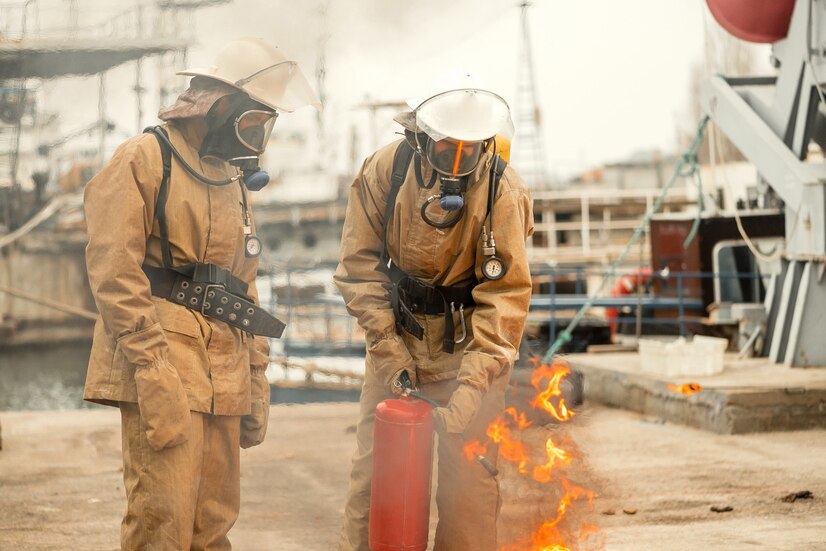Fire and explosion analysis is a critical field that plays a pivotal role in understanding and preventing devastating incidents in various industries, from manufacturing and energy to transportation and construction. These incidents can have catastrophic consequences, leading to loss of life, property damage, environmental pollution, and economic disruptions. To mitigate these risks, engineers and experts employ a range of methods and techniques to analyze fires and explosions. In this article, we will delve into some of the key methods and techniques used in Fire And Explosion Analysis.
Top Techniques for Fire and Explosion Analysis
Root Cause Analysis
Root cause analysis is a fundamental step in understanding the factors that contribute to fires and explosions. It involves a systematic investigation to identify the primary and underlying causes of an incident. This method typically follows a structured approach, such as the “5 Whys” technique, which involves asking “why” multiple times to trace the problem back to its source. By identifying the root causes, experts can develop strategies to prevent future incidents.
Hazard and Risk Assessment
Hazard and risk assessments are essential components of fire and explosion analysis. These assessments aim to identify potential hazards and evaluate the associated risks. Techniques such as Hazard and Operability Studies (HAZOP) and Failure Mode and Effects Analysis (FMEA) help experts analyze the processes, equipment, and procedures in place, identifying vulnerabilities and potential failure modes that could lead to fires or explosions.
Computational Fluid Dynamics
Computational Fluid Dynamics is a powerful tool for analyzing fire and explosion scenarios. CFD simulations model the behavior of fluids, gases, and heat transfer in various environments, allowing experts to predict the spread of fire and the dispersion of hazardous materials. This method helps in understanding the dynamics of a fire or explosion, predicting its behavior, and optimizing safety measures.
Fault Tree Analysis
Fault Tree Analysis is a graphical method used to analyze and visualize the potential causes of accidents, including fires and explosions. It starts with a “top event,” such as a fire, and traces back through a tree of contributing factors and events. By identifying the critical pathways and common causes, FTA helps experts understand the vulnerabilities and potential points of failure in a system.
Event Tree Analysis
Event Tree Analysis is a complementary technique to FTA. While FTA focuses on the causes of an incident, ETA analyzes the consequences and sequences of events following an initial incident, such as a fire or explosion. By assessing possible scenarios, their probabilities, and consequences, experts can develop strategies to mitigate the impact of an incident and improve safety measures.
Forensic Analysis
Forensic analysis plays a vital role in post-incident investigations. Forensic experts use various techniques to examine the remnants of a fire or explosion, gather evidence, and determine the cause. This can include examining physical evidence, analyzing chemical residues, and reconstructing the sequence of events leading to the incident.
Safety Management Systems
Safety Management Systems are proactive approaches to prevent fires and explosions. These systems integrate safety into all aspects of an organization’s operations. They involve Risk Assessment, safety policies, training, and continuous monitoring. By implementing SMS, organizations can identify potential hazards, develop preventive measures, and maintain a culture of safety.
Human factors analysis recognizes that human errors can contribute to fires and explosions. It focuses on understanding the impact of human behavior, decision-making, and cognitive factors on safety. By studying how people interact with equipment and processes, experts can design systems that are more resilient to human error.
Different industries have specific standards and codes that address fire and explosion safety. These guidelines provide recommendations and requirements for the design, operation, and maintenance of equipment and facilities. Adhering to these standards is essential for preventing incidents and ensuring the safety of personnel and the environment.
Final thoughts
In conclusion, fire and explosion analysis is a multidisciplinary field that employs various methods and techniques to understand, prevent, and mitigate the risks associated with fires and explosions. By conducting root cause analysis, hazard and risk assessments, using computational tools like CFD, and implementing safety management systems, experts can create safer environments and reduce the likelihood of catastrophic incidents. Additionally, forensic analysis, industry-specific standards, and an understanding of human factors play crucial roles in improving safety and preventing fires and explosions. Continuous research and development in this field are essential to staying ahead of emerging risks and ensuring the safety of individuals and communities.




